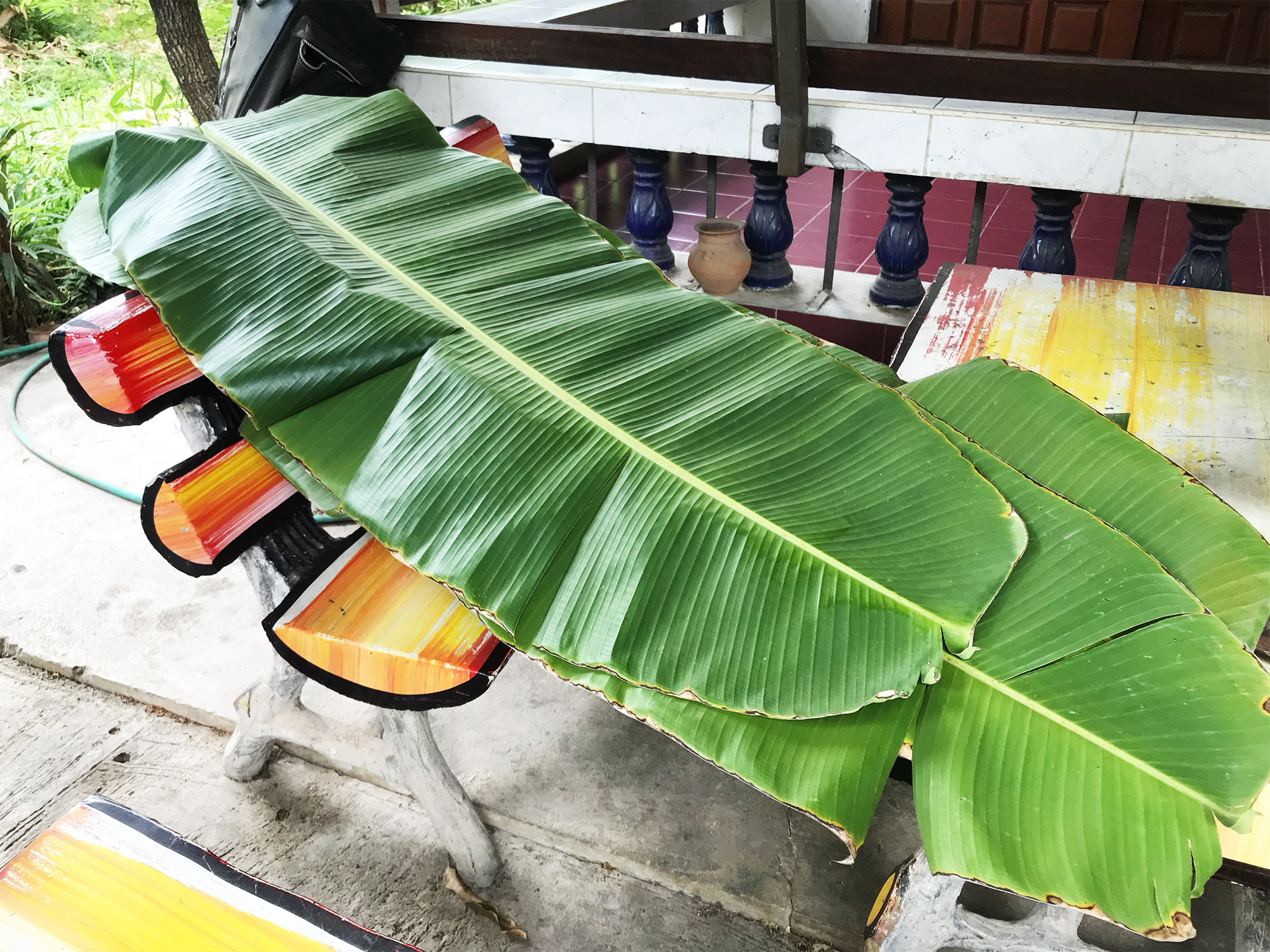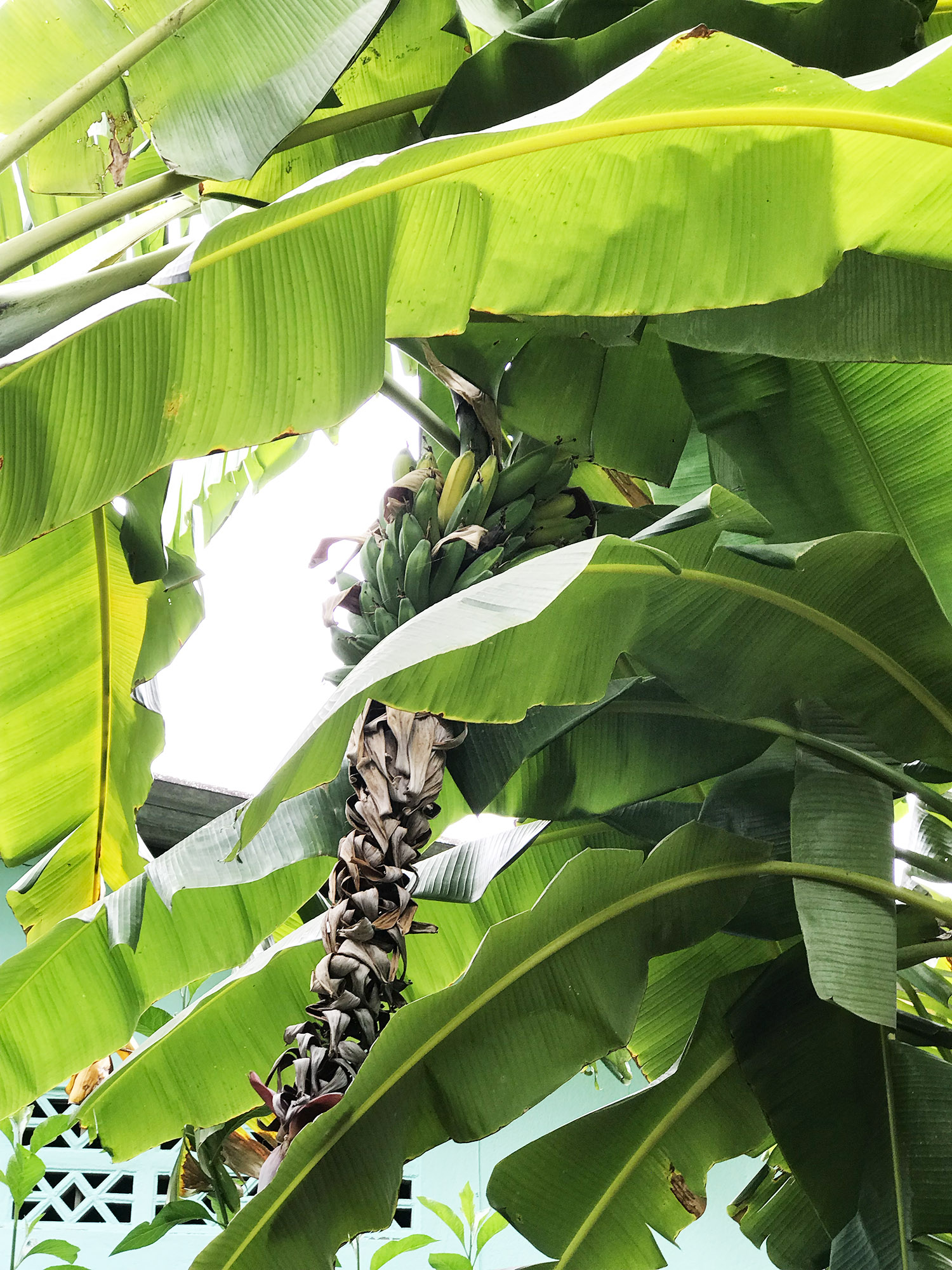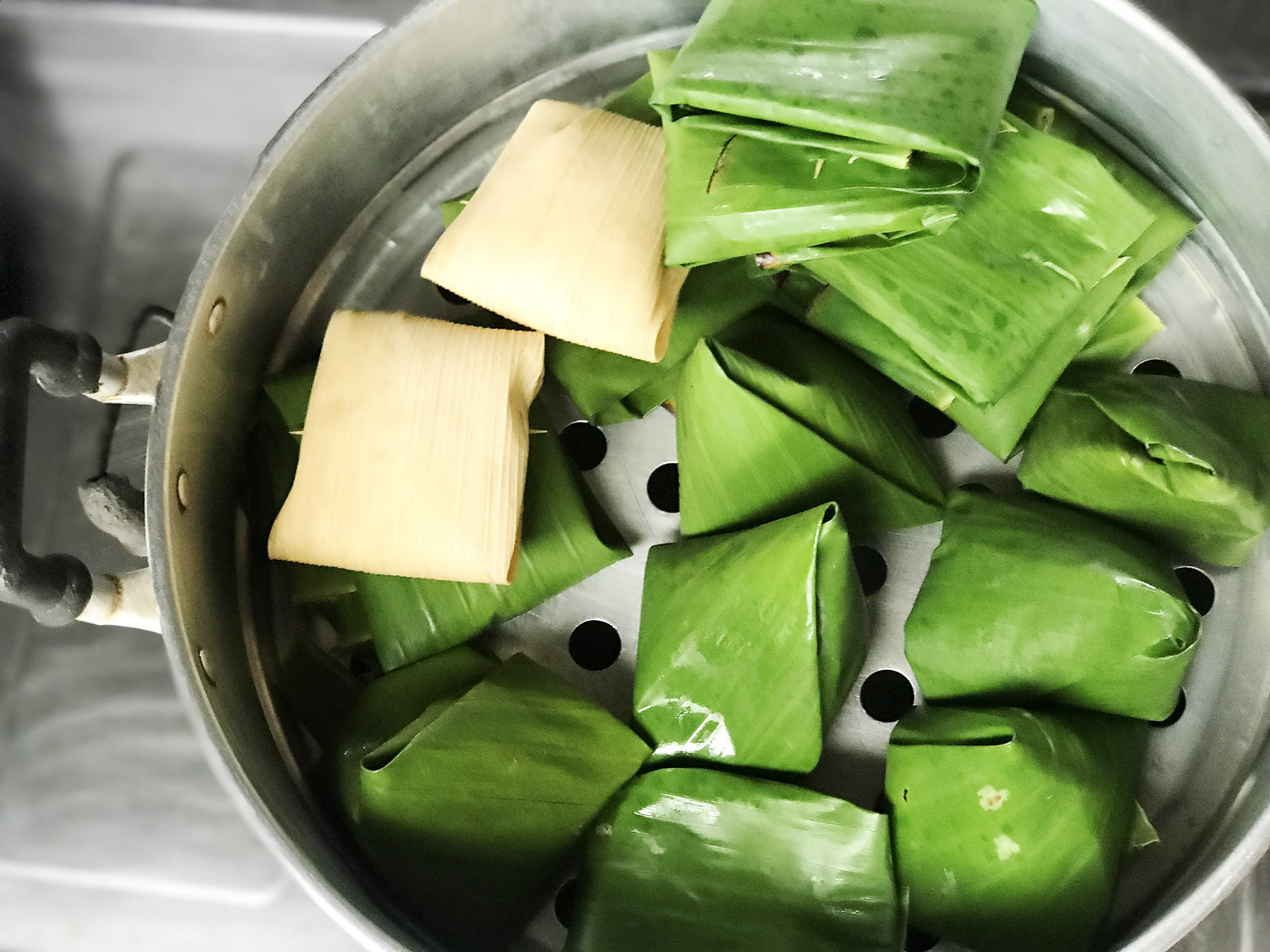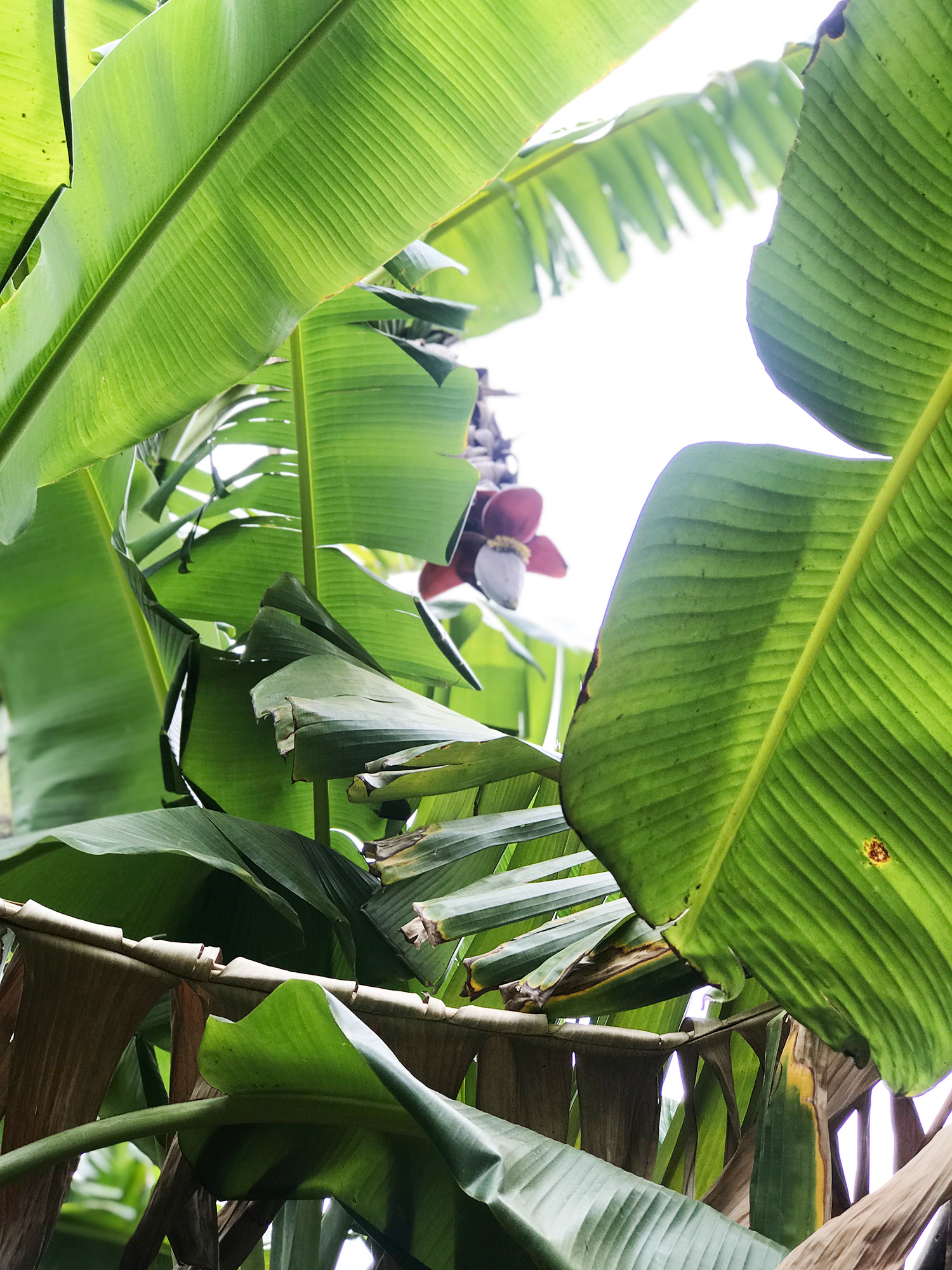
Banana leaves are used in many cuisines around the world, especially in Southeast Asia, Latin America, and parts of Africa. They work as a natural wrapper when steaming, baking, or grilling food. You don’t eat the leaves, but they help lock in moisture and add a subtle, aromatic flavor to whatever you’re cooking.
In Mae Sot, banana trees are everywhere, and at Tea Garden in Mae Sot, the kitchen puts them to good use. But before you can start cooking with banana leaves, there’s a bit of prep involved.
Start by rinsing the leaves under cool water to remove dust and dirt. They’re usually quite big, so it’s easiest to do this outside or in the shower. Use scissors to cut away the tough center rib, and trim any dark or torn edges.
Fresh banana leaves are stiff and prone to cracking, so they need a little heat to make them soft and pliable. The easiest way is to hold the leaf over a gas flame for a few seconds on each side. You’ll see the color shift slightly and the leaf will become more flexible. No gas? No problem. Just pop the leaves in a warm oven (around 300°F) for a few minutes. You want them soft, not dried out.
After heating, the leaves might be a bit damp, so give them a quick wipe with a clean dish towel. Then they’re ready to go. You can use them to wrap fish, meat, or veggies, and cook them in the oven, on the grill, or in a steamer. Use toothpicks or kitchen twine to keep the parcels closed.
If you don’t use all the leaves right away, you can keep the rest in the fridge wrapped in plastic or in a freezer bag for up to a week. They also freeze well. Many Asian supermarkets sell frozen banana leaves that are already cleaned—just thaw and warm them briefly, and they’re ready to use.
Recipe: Burmese banana wraps from Tea Garden in Mae Sot >>




